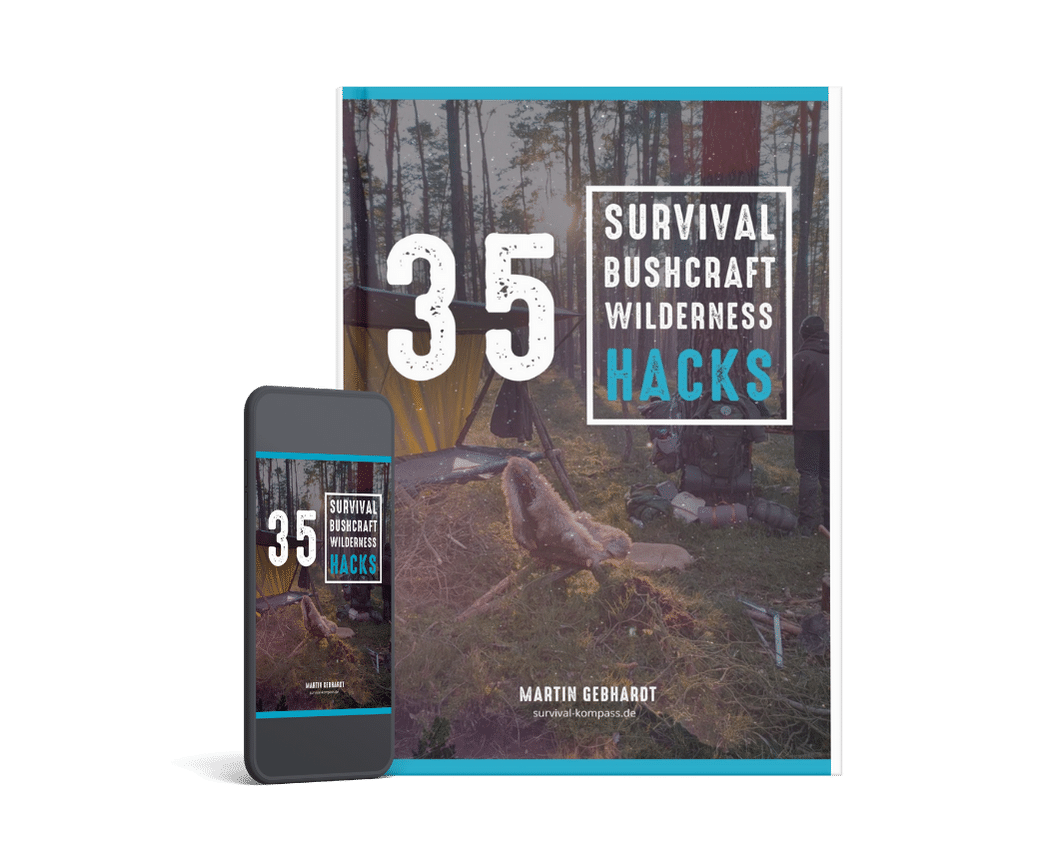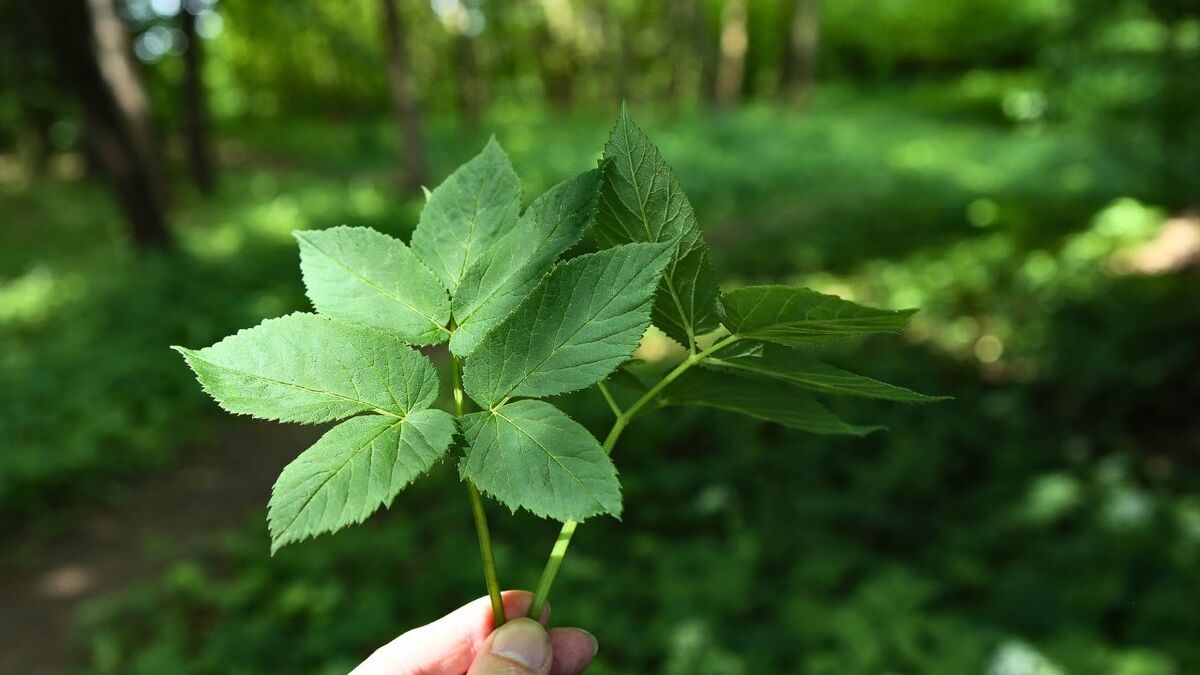
Ground elder: From gardener's nightmare to superfood from the undergrowth
👉 The key facts from this guide
- Ground elder is often unwanted in the garden, but it is actually a free, nutrient-rich wild vegetable with many uses.
- The "3x3 rule" helps with safe identification: Ground elder leaves consist of 3 groups with 3 leaflets each and have a three-angled stem.
- Warning of confusion: Especially the toxic petroselinum crispum resembles ground elder, but smells different and has a round stem.
- Ground elder can be harvested from spring to late summer – especially young leaves, leaf stems, flowers, and seeds are edible and delicious.
- It tastes like a mix of parsley and carrot and is super versatile: salads, pesto, tea, smoothies, soups – anything is possible!
- Moreover, ground elder is full of vitamins and minerals and can even serve as a plant-based first aid for minor ailments.
Not again ground elder! – Hand on heart, who hasn't thought that while looking into the garden or at the edge of the forest?
This stuff really grows EVERYWHERE! No sooner do you turn around than it has conquered another corner.
For many, Aegopodium podagraria, as it is botanically called, is the absolute nemesis in the garden – invasive, persistent, and seemingly indestructible.
But hey, as a wilderness educator and a friend of everything that is green and grows (and is edible!), I see it a little differently.
What if I told you that this "pest" is actually an underrated powerhouse plant? A free, nutrient-rich wild vegetable just waiting to be discovered by you?
Sounds exciting? Then read on!
Recognizing Ground Elder Safely: The Power of THREE!
Before we dive into the culinary adventures, the most important thing comes: safe identification. And here, the ground elder has a pretty cool trick up its sleeve that makes your life easier. Just think of the number THREE!
The magical three: The unmistakable leaf pattern
The most essential point: Take a close look at the leaf structure! A ground elder leaf almost always consists of three leaf groups, and each of these groups is usually further divided into three individual leaflets. So: 3 x 3. Remember that! The individual leaflets are oval to elongated, with slightly serrated or jagged edges.
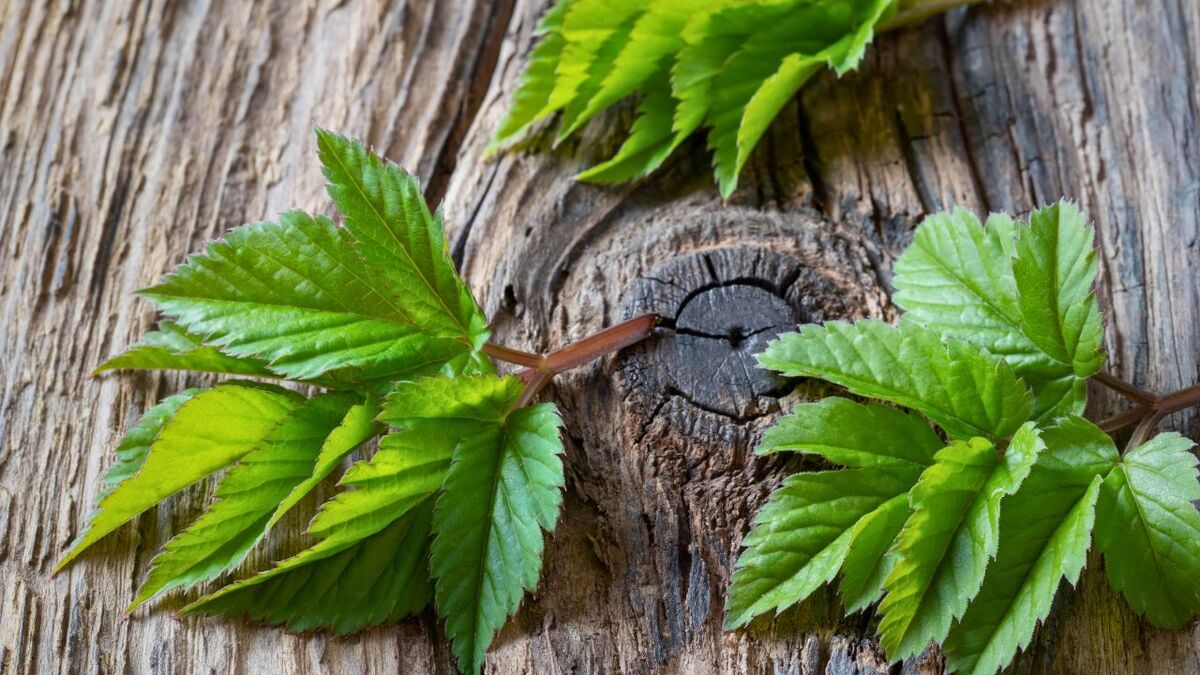
The Stem Check: More than just round
Feel the petiole! Unlike many other plants, the ground elder has a triangular stem instead of a round one. You can often feel a distinct edge. Occasionally the lower part of the stem is even slightly reddish.
Smell test: Nose to the leaves!
If you are still unsure, crush a leaf between your fingers. The smell is characteristic and strongly reminiscent of a mixture of parsley and carrot. This scent is another good indication.
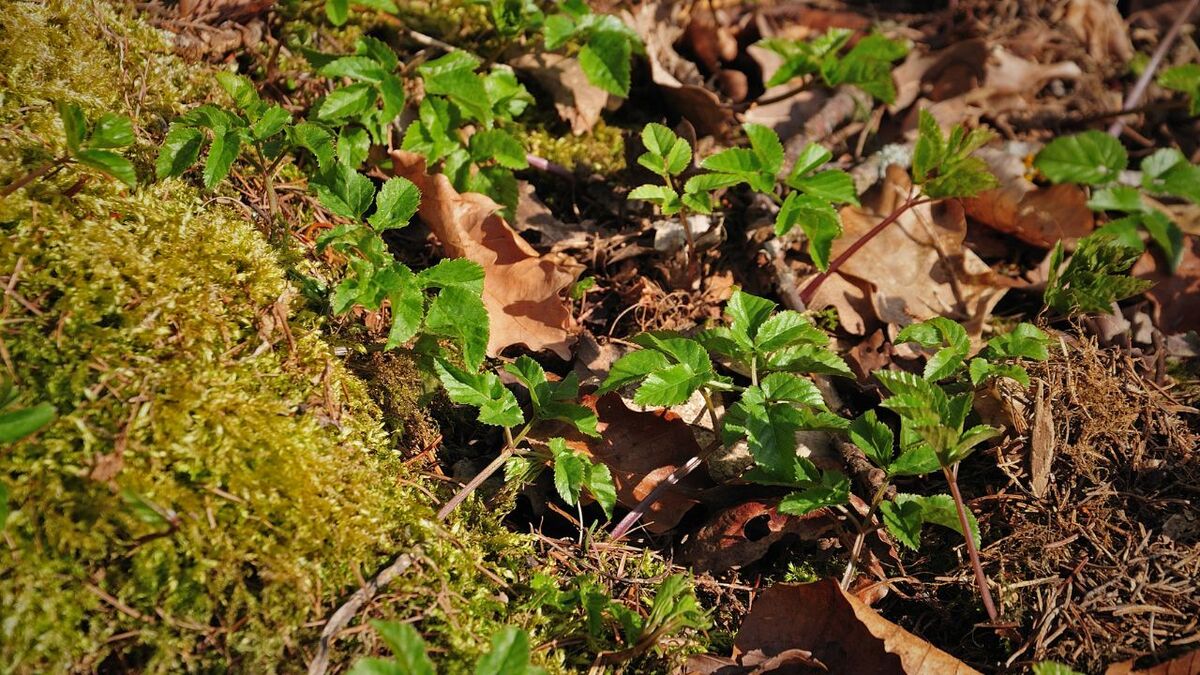
Location: Where the ground elder feels at home
The Ground elder is not a sun worshiper. You mainly find it in:
- moist, shady to semi-shady places
- such as forest edges, under hedges, in gardens (often to the dismay of the owners), along streams
- everywhere the soil is nutrient-rich, and it doesn't have to roast in the blazing sun, it feels perfectly at home
It does not make high demands and likes to spread out extensively when allowed.
Vital Warning: Deadly Confusion Risk
Okay, the "three-rule" is great, but it is NOT a guarantee if you don't check other features as well! There are plants that can resemble goutweed, and one of them is DEADLY POISONOUS:
The Archenemy: The fool's parsley (Aethusa cynapium)
This plant also belongs to the Apiaceae family and looks deceptively similar to ground elder at first glance (especially in its young stage). A mix-up can be fatal!
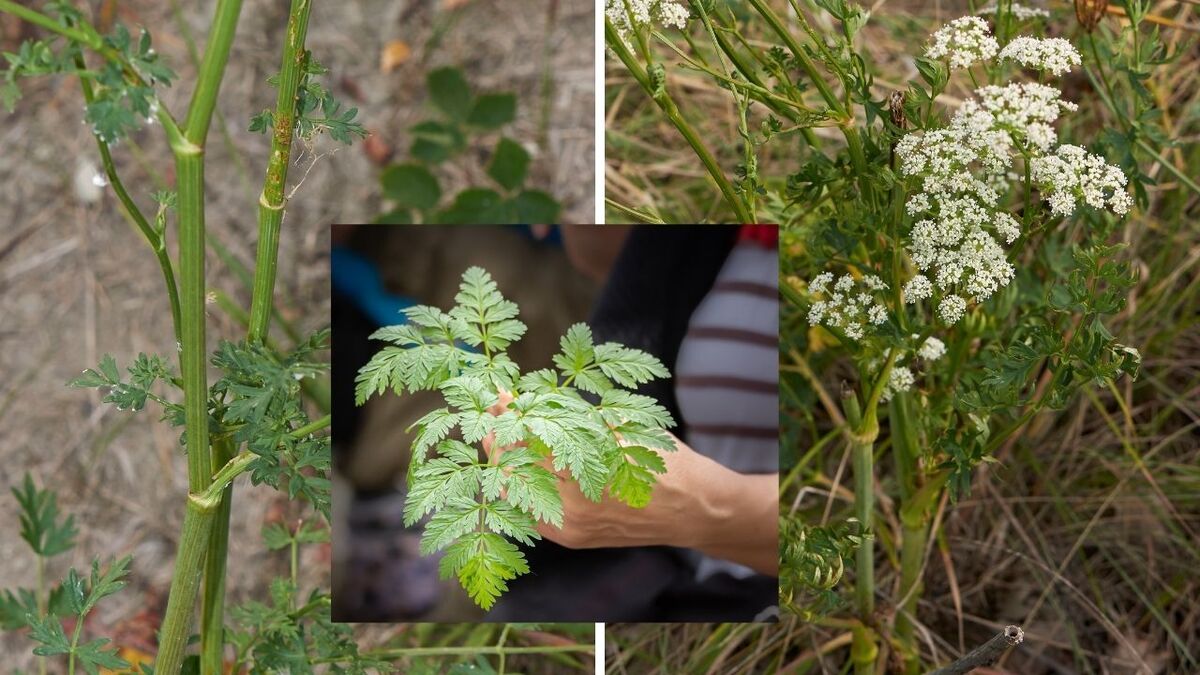
Differences to fool's parsley:
- Smell: When crushed, fool's parsley often smells unpleasant, leek-like, or not at all – definitely NOT like parsley/carrot.
- Stem: The stem is usually round (not triangular!), often bluish frosted or reddish tinged, but bald.
- Leaves: The leaves are finely divided, often 2-3 times pinnate and have a distinct shine on the underside. The typical "3x3" structure of ground elder is missing.
- Flowers (later): The umbels typically have 3 long, drooping bracts – an important feature that ground elder does not have.
Absolute warning: If you suspect consumption of fool's parsley (symptoms may include severe burning in the mouth, increased pulse, signs of paralysis) – CALL emergency services IMMEDIATELY and have the stomach emptied! This is a matter of life and death!
Other possible confusions
Even if less dangerous, pay attention to differences to:
- Giant Hogweed (also toxic!), Wild Chervil (non-toxic), Wild Carrot (non-toxic): Often have hairy stems and leaves, smell different, and do not have the clear 3x3 structure and the triangular stem.
The Golden Rule: Only collect and eat what you have 1000% positively identified! When in doubt: hands off or ask an expert! No wild plant in the world is worth risking your health.
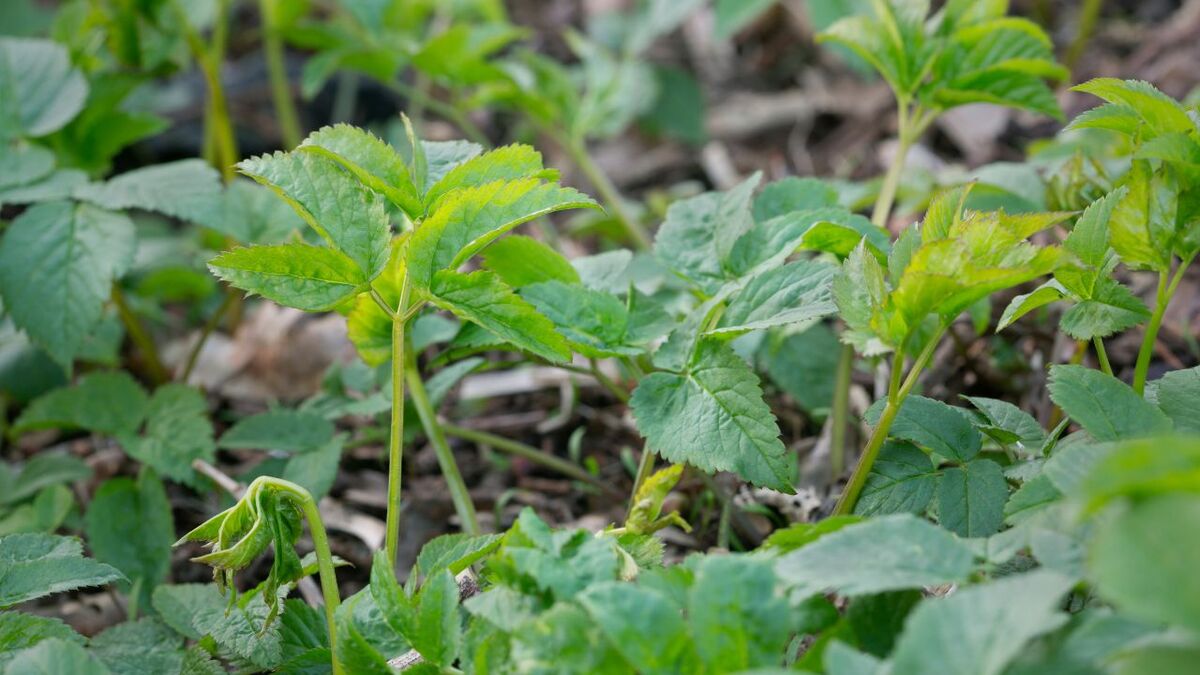
Eating Instead of Weeding: Ground Elder in Your Wilderness Kitchen
Okay, you have surely recognized your goutweed? Perfect! Then let's discover what this "garden terror" has to offer culinarily. The great thing: You can use almost the whole plant!
What is edible and when?
- Young leaves: Throughout the year, as long as they are tender (best in spring). Raw or cooked.
- Leaf stalks & buds: May to August. Raw (if very tender) or cooked.
- Flowers: June to August. Raw or cooked (have a sweetish note!).
- Fruits/seeds: July to September. Raw (spicier!) or dried as a spice.
You can harvest goutweed from February to late summer, as it continuously forms new, young shoots. Simply pluck the tender leaves – you usually don't even need a knife for that.
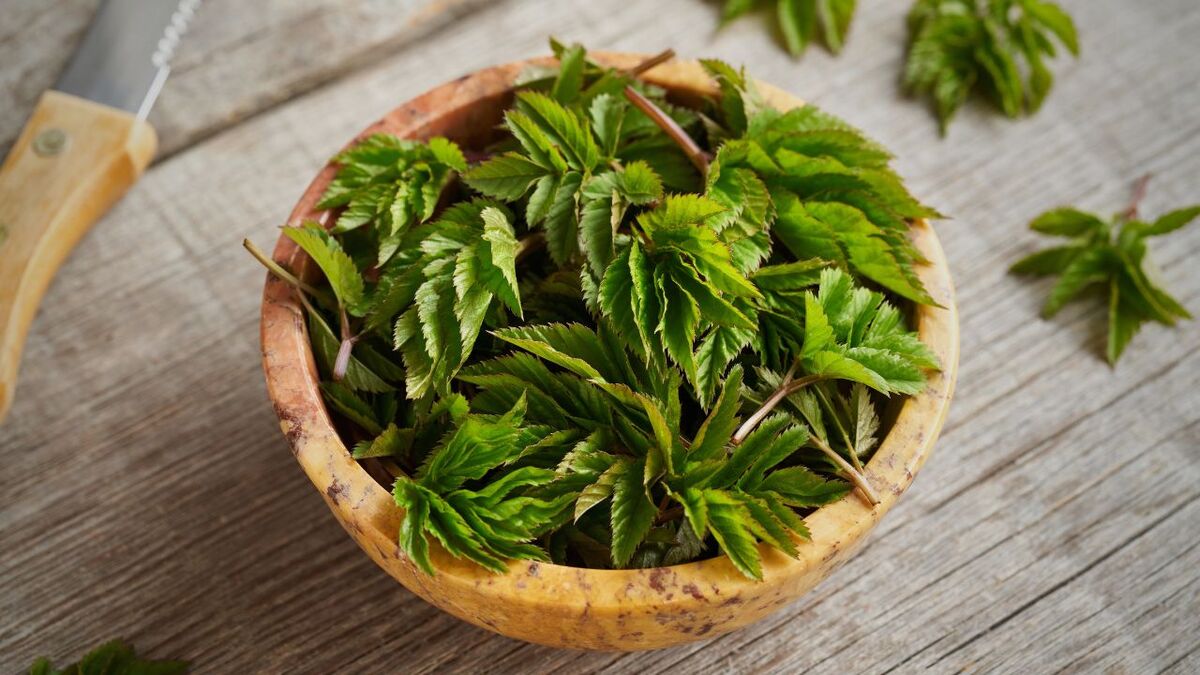
Flavor Explosion: Parsley Meets Carrot
As already mentioned, the leaves taste strongly like a mixture of parsley and carrot, mild and spicy. The flowers are a bit sweeter, and the fruits bring a slight spiciness.
Preparation Ideas for Explorers
Ground elder is incredibly versatile:
- Raw in salad: Young, tender leaves give salads a fresh, spicy kick.
- Like spinach: Simply sauté or boil briefly – as a side dish or filling.
- Pesto power: Instead of basil, mix a ground elder pesto! Super delicious with pasta.
- Soups & stews: Chopped as a seasoning herb added shortly before serving.
- Smoothie booster: Drives away spring fatigue! Blend ground elder (best with sweet fruit as a counterbalance) into your smoothie. Especially delicious and powerful together with nettle and wild garlic, maybe even in a tomato juice?
- Tea: A mild tea can be prepared from fresh or dried leaves.
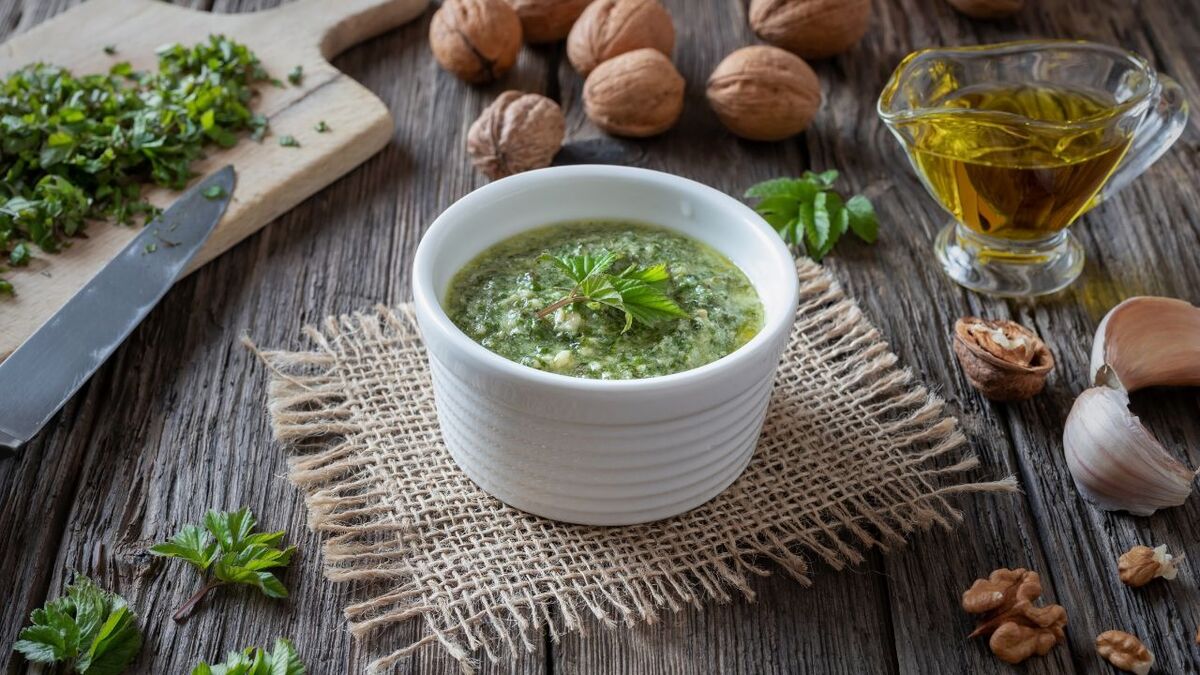
More than just food: Ground elder as a survival helper
This sturdy guy can do even more!
- Vitamin bomb: Ground elder is bursting with vitamin C (reportedly up to 12x more than oranges!), contains valuable protein, minerals like potassium, magnesium, calcium, and trace elements like zinc and iron. No wonder, it helps against spring fatigue and stimulates digestion!
- First aid from nature: Ground elder is said to have an anti-inflammatory effect. Strongly crushed leaves can be applied as a compress (Poultice) for minor burns, sunburn, or insect bites. (Of course, only for small ailments; for serious injuries, see a doctor!).
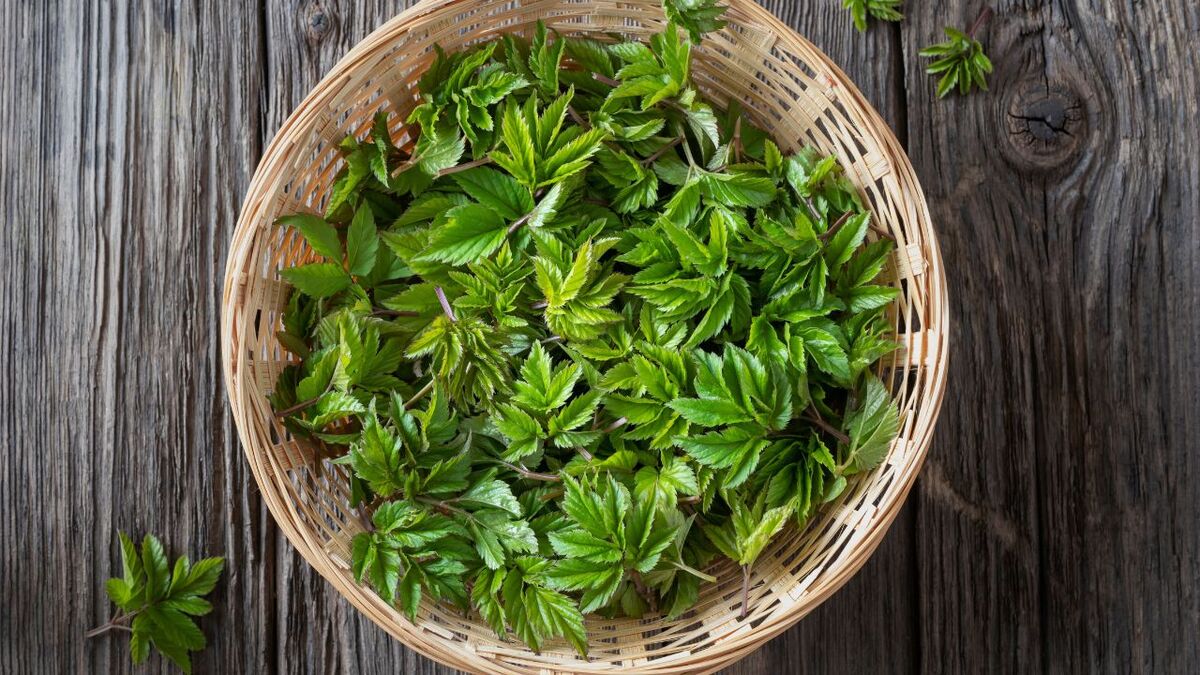
Conclusion: Friend instead of foe – Give the ground elder a chance!
Yes, goutweed can be annoying in the garden. But when we view it not as an enemy, but as a gift from nature, a world full of possibilities opens up.
It is a free, extremely nutrient-rich, and versatile wild vegetable that is available to us almost all year round.
The key lies – as always in the wilderness – in knowledge and respect. Learn to recognize it safely (THREE!), be aware of the life-threatening risk of confusion, and only harvest what you know for sure.
Then nothing stands in the way of your ground elder adventure. Give it a try – maybe ground elder will become your new secret star in wild herb cuisine!


Author of the guide
Martin Gebhardt
Hey, I'm Martin. On my blog, you will learn the basics and numerous details about living in the wild. I think survival, bushcraft and the good life in nature are the keys to happiness. Find me here on Instagram or on YouTube. You can find more about my mission on the About Me page.
Was this guide helpful?
12 people found this guide helpful.
5.00 out of 5 points (12 Ratings)
Comments (0)
This post may contain affiliate links. So if you click on the links and make a purchase, I will receive a small commission at no additional cost to you. Click here, to learn more about it.


